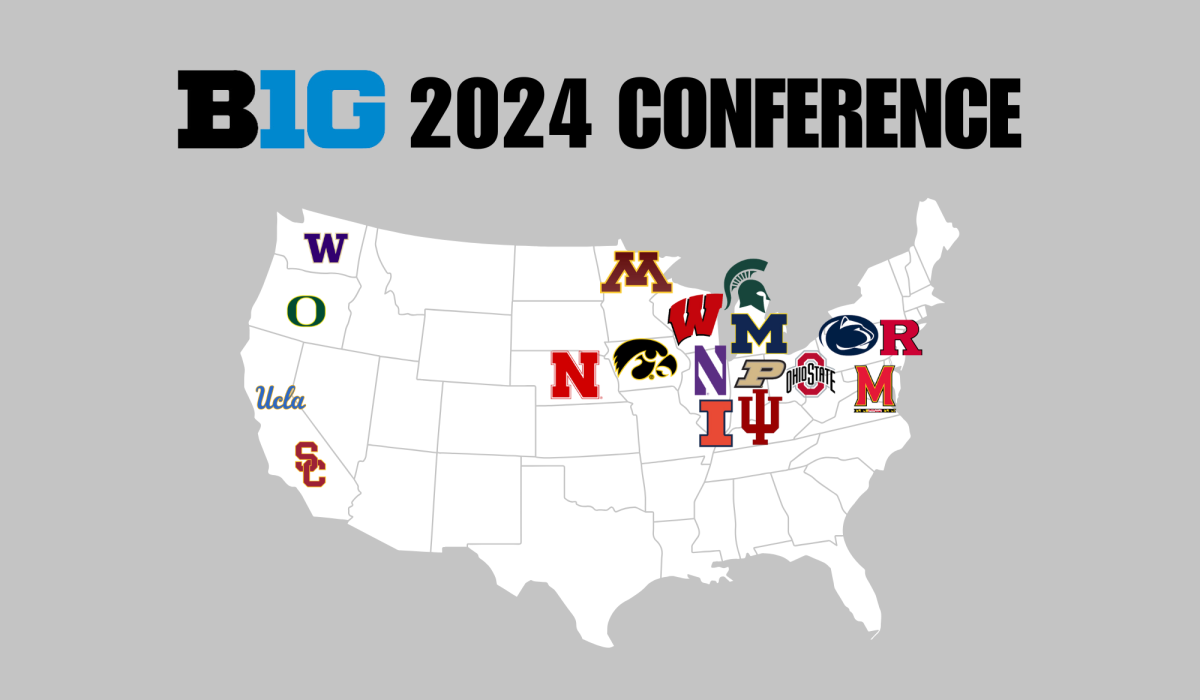The Big Ten Conference now expands from coast to coast, as it started the 2024 football season as UCLA and USC announced their joining in 2022, as well as Oregon and Washington a year later. However, this change did not come into effect until August 2024. The Big Ten conference now houses 18 teams, covering 2,800 miles, crossing all 4 of the US’s contiguous time zones.
The effect of this big change is not only causing an increase in time for these student athletes to travel, but also affecting the results on game day and the health of our climate.
Big Ten teams who have traveled across more than 2 time zones now have a losing result of 2-9. These losses were not as predicted. USC had an upsetting loss to Michigan after traveling 2,283 miles. Number 2 Ohio State lost to Oregon 25-38 for the first time in history after traveling 2,067 miles.
Conference expansion is not something new to the Big Ten, as Nebraska was added back in 2011, causing just as much controversy. Luckily enough, Nebraska previously bordered the Big Ten, creating little change for geographic travel for Nebraska.
“These athletes will have to use their time very wisely, study on the plane, be sure to get good sleep and drink lots of water,” Chuck Chmelka, head coach of UNL Men’s Gymnastics, said.
For major sports such as football, plenty of access is given involving the proper sleep clinicians, nutritionists, and a big one, private planes for at least 20 of the teams. Thousands of dollars are being invested in travel for these athletes to create the best conditions possible for play.
While major sports have money to spend, Olympic sports will be the athletes that take the hardest hit. As many of these teams are not revenue gaining sports, funds are limited as well as access to planes and flights. For example, gymnastics travels commercially, and will require tedious planning to schedule these cross country flights. Penn State is located in State College, Pennsylvania, whose airport runway is too short for commercial flights to takeoff and land. This requires the team to not only travel hours on a plane to get to their competitors in California, but a two-hour bus ride to get to the nearest airport with a 10,000-foot runway in Harrisburg.
“We will definitely need to increase our travel budget to compete on the west coast,” Chmelka said. “Air tickets will be expensive and then extra nights in the hotel will be as well.”
As athletes travel, more carbon emissions come with it. According to an ASU Study titled Carbon Emissions in Football Games, “Every realignment of the Big Ten conference leads to a rise in carbon emissions, reflecting the conference’s ongoing growth. When Nebraska joined in 2011, emissions increased by 16% the following year.” While more carbon emissions flood our air, many Nebraska fans may beg for the beloved balloons back.
Regarding football, the newly added members to the Big Ten coming from the Pac-12 will bring new playing styles to the conference. The mix-up of teams can bring fresh competition as it’s been stated time and again that the Pac-12 is dying, and the newly added teams are ready for something new. The question is whether this expansion is worth the side effects.
“We’ve taken a lot of care to try to minimize travel where we can,” Tony Pettiti, BigTen conference commissioner said, in an article Big Ten conference expansion brings challenges and opportunities alike By Matt McGowan. “But it’s our responsibility and our job to listen to student-athletes, to listen to coaches to make sure that we’re adjusting and making the changes we need.”



